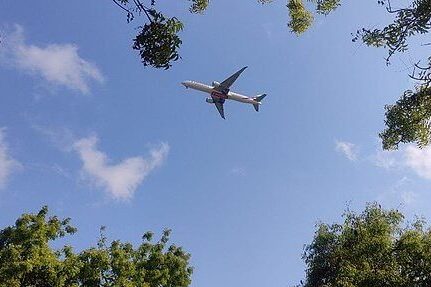
Researchers from Reading University in the UK have revealed that flight turbulence has become more prevalent as a result of climate change-induced global warming.
The scientists focused on clear-air turbulence, which is particularly challenging for pilots to anticipate and avoid. Their study found a significant 55% increase in severe turbulence occurrences between 1979 and 2020 along busy North Atlantic flight routes.
The rise in turbulence was attributed to changes in wind speed at high altitudes caused by the influx of warmer air from carbon emissions.
“Following a decade of research showing that climate change will increase clear-air turbulence in the future, we now have evidence suggesting that the increase has already begun,” said Prof Paul Williams, an atmospheric scientist at the University of Reading who co-authored the study.
“We should be investing in improved turbulence forecasting and detection systems, to prevent the rougher air from translating into bumpier flights in the coming decades.”
Particularly affected were flight routes in the USA and North Atlantic, which experienced the most substantial upsurge. Europe, the Middle East, and the South Atlantic also saw significant increases in turbulence.
The scientists explained that the heightened turbulence resulted from greater wind shear within the jet stream. The jet stream, a powerful wind system blowing from west to east approximately five to seven miles above the Earth’s surface, experiences shifts in wind speed due to global warming. This phenomenon is largely driven by temperature disparities between the equator and the poles.
While turbulence cannot be directly observed by satellites, they can detect and analyse the structure and shape of the jet stream, which indirectly reveals its impact. Conventional radar systems are ineffective in identifying clear-air turbulence, as it lacks visible markers and is challenging to detect.
Apart from causing discomfort during flights, turbulence can lead to injuries for passengers, particularly when they are not securely belted in. Severe turbulence is relatively rare, but clear-air turbulence can suddenly arise without warning.
The consequences of increased turbulence extend beyond passenger well-being. The aviation industry faces financial losses of up to $500 million annually in the US alone due to turbulence-related effects, such as aircraft wear-and-tear. Additionally, turbulence avoidance results in increased fuel consumption, which adds to the aviation industry’s environmental footprint.
“Nobody should stop flying because they’re afraid of turbulence, but it is sensible to keep your seat belt fastened all the time, unless you’re moving around, which is what the pilots do,” said Prof Williams. “That is almost a guarantee that you will be safe even in the worst turbulence.”
The findings of this study, published in the journal Geophysical Research Letters, underscore the need to address climate change’s impact on air travel. As the frequency of turbulence rises, it becomes imperative for airlines and aviation authorities to develop strategies to minimise its effects on both passenger safety and the industry’s economic and environmental sustainability.

